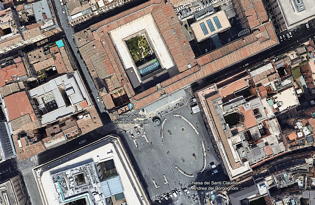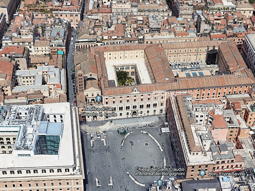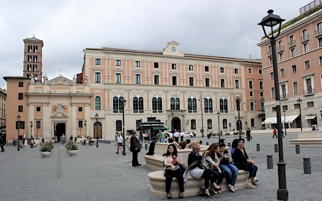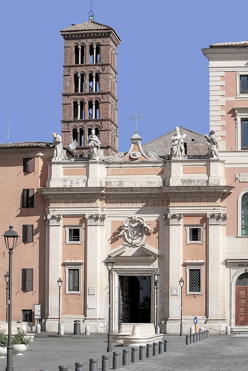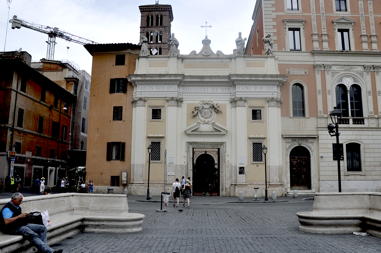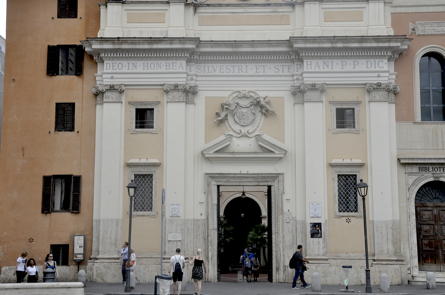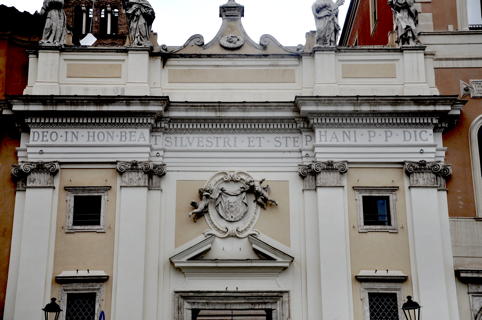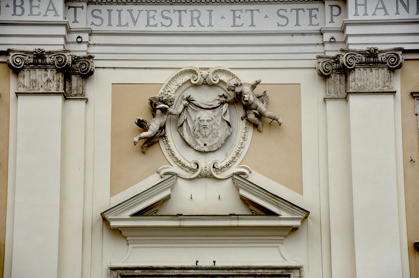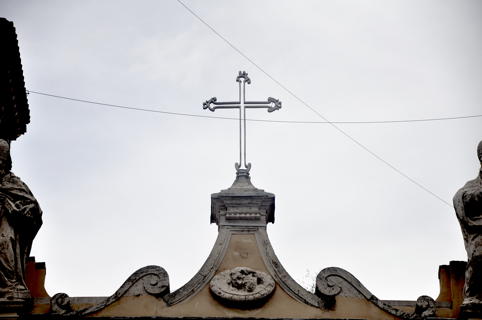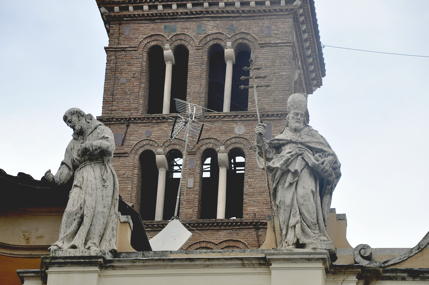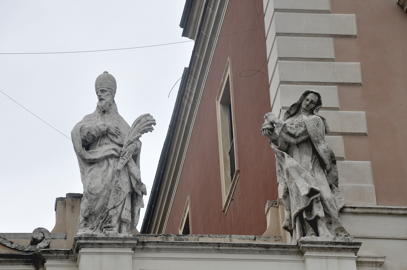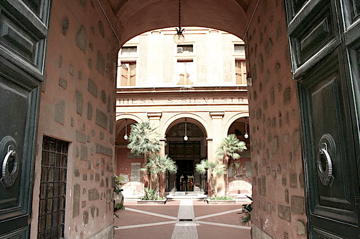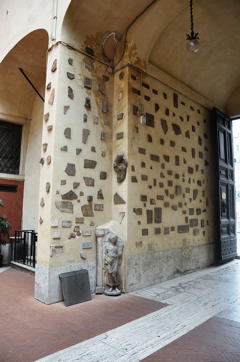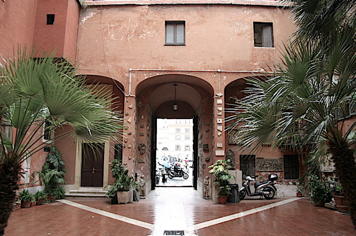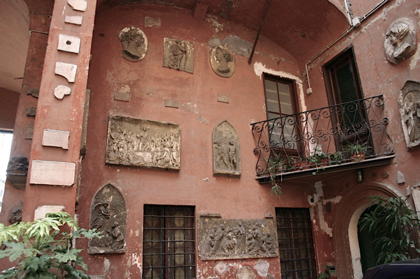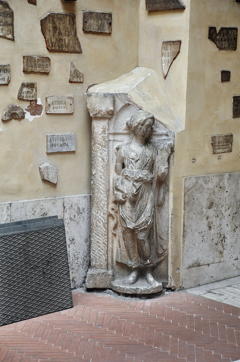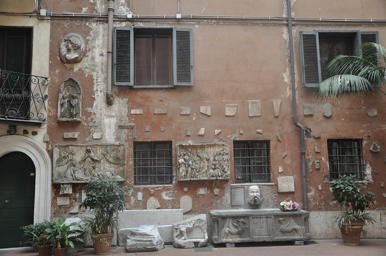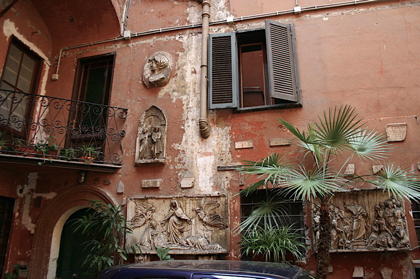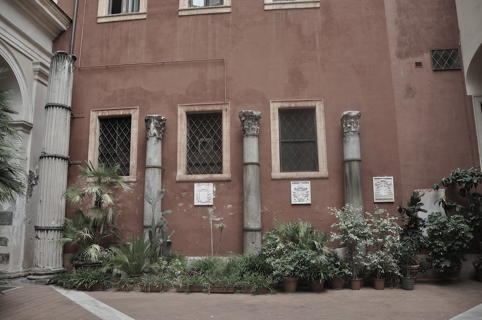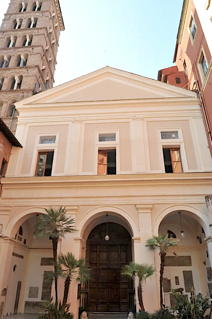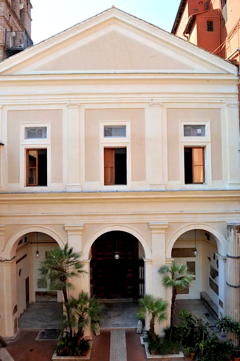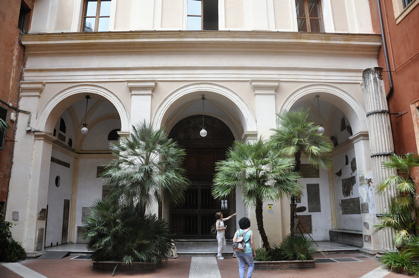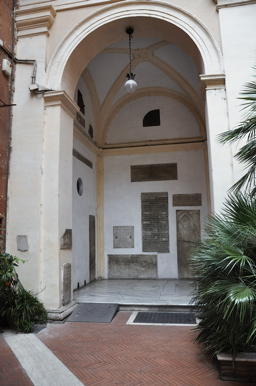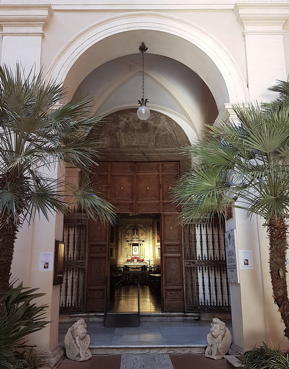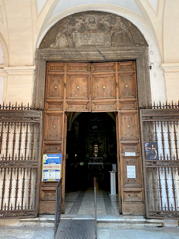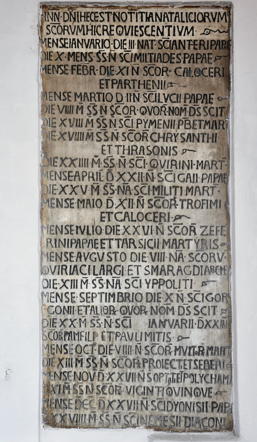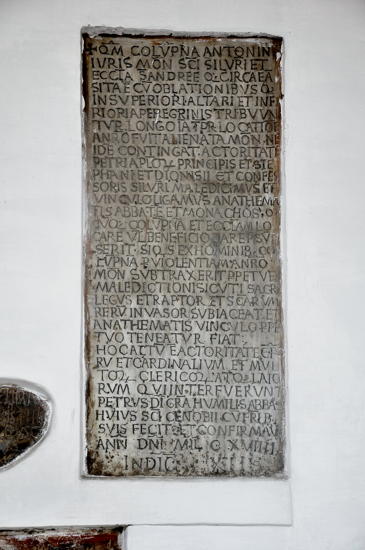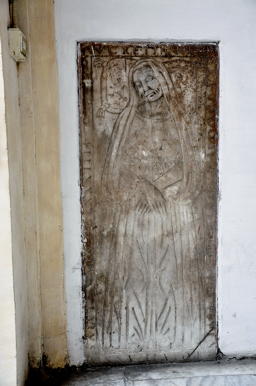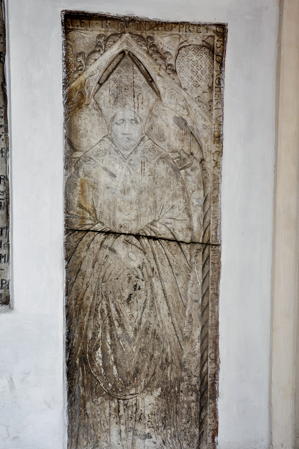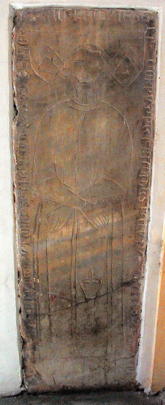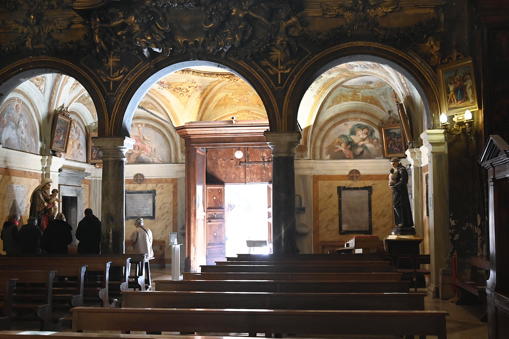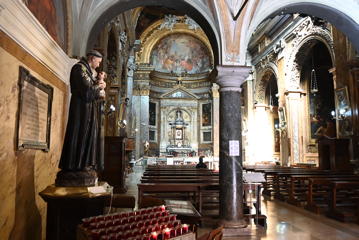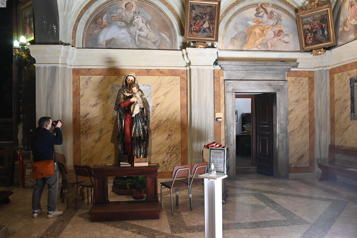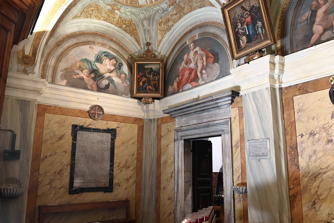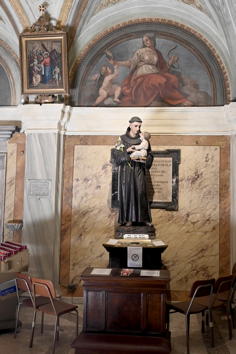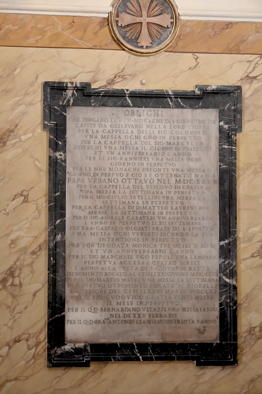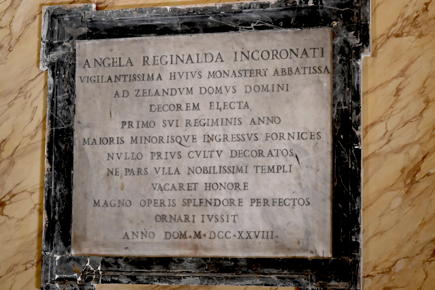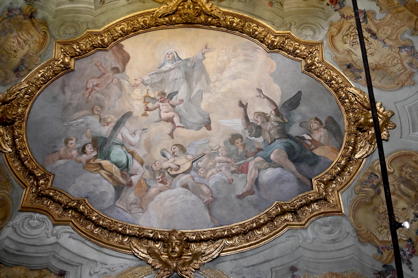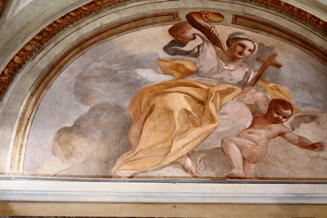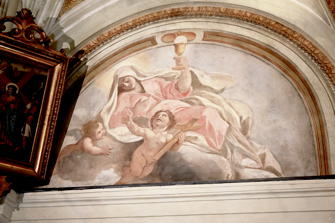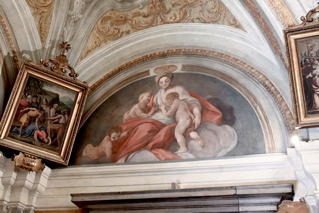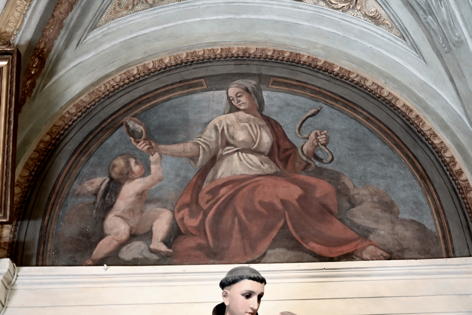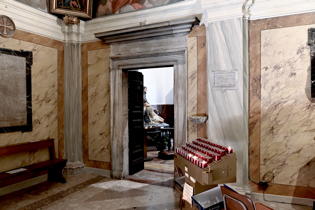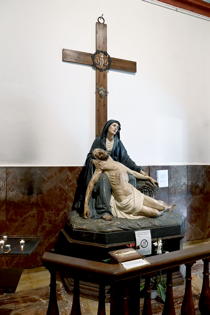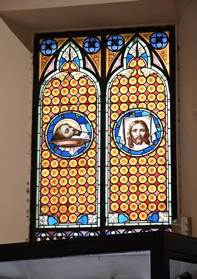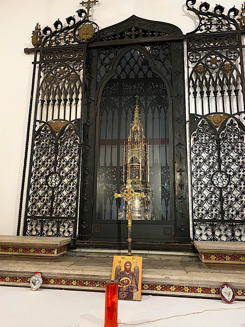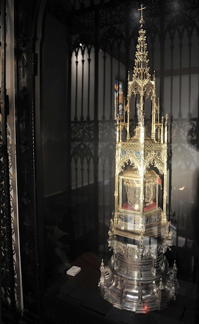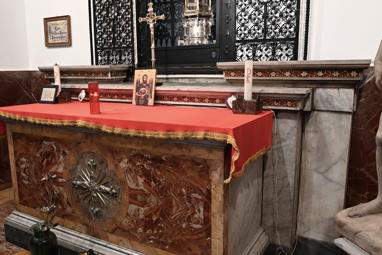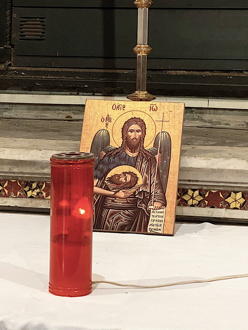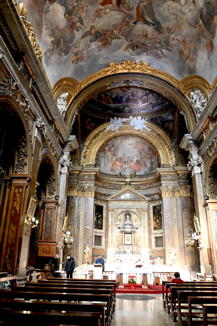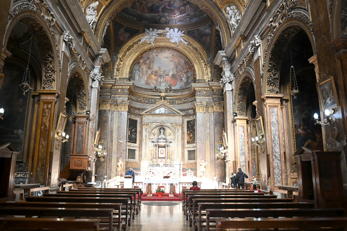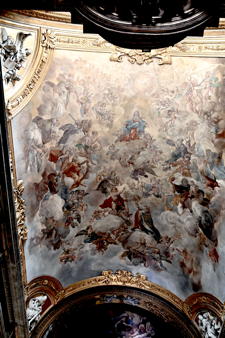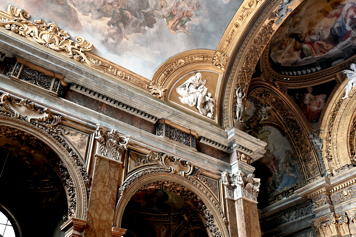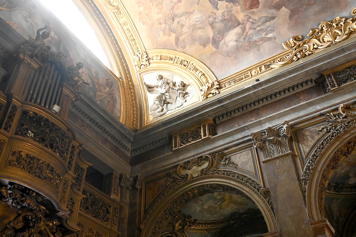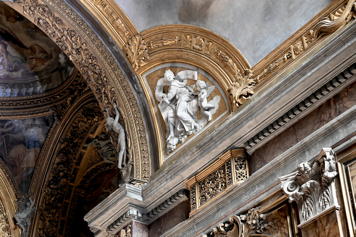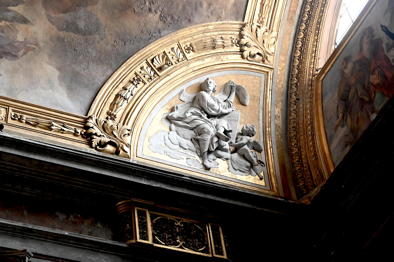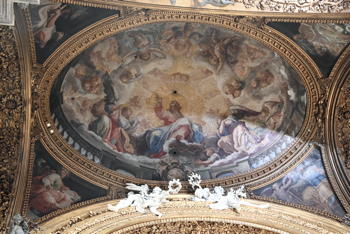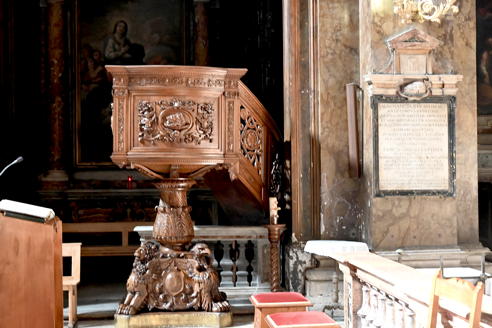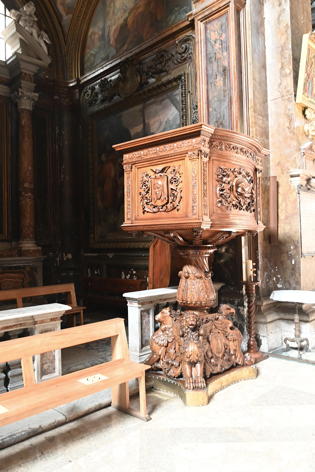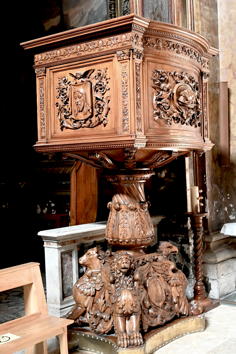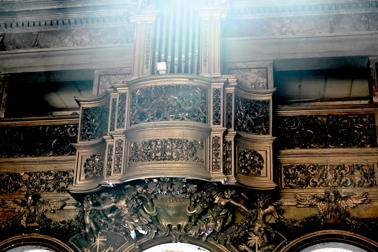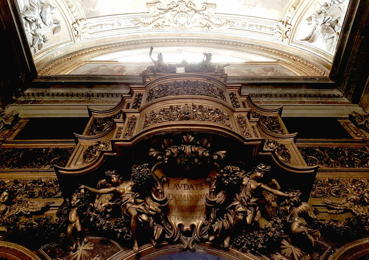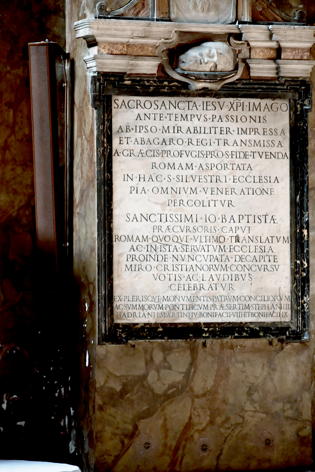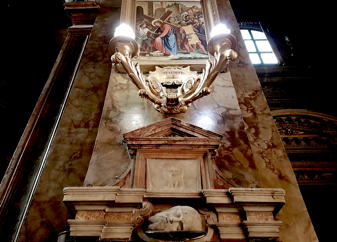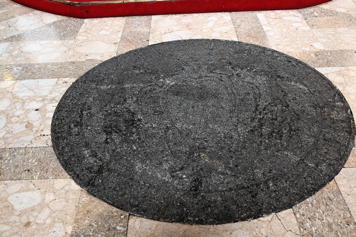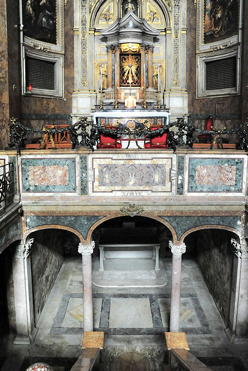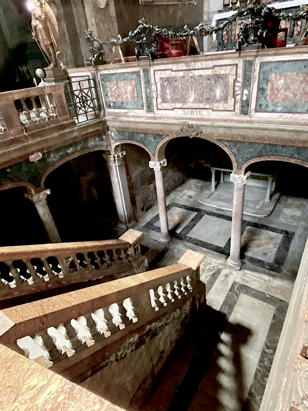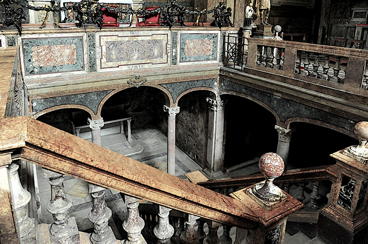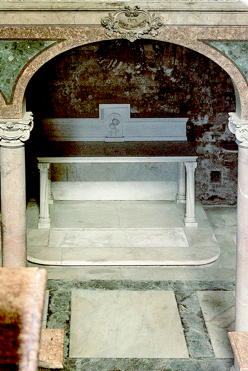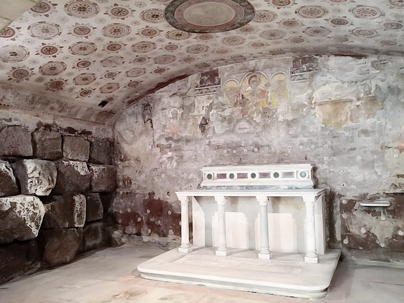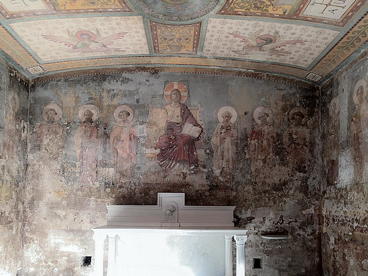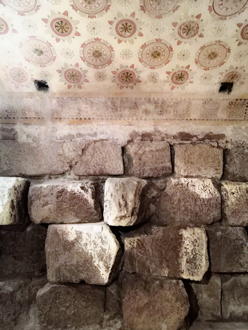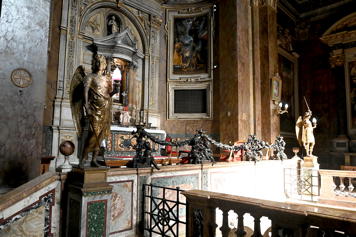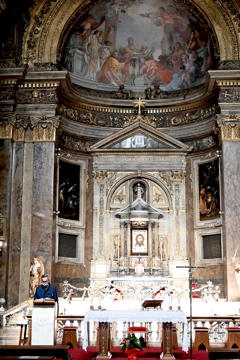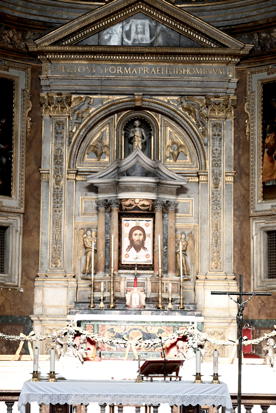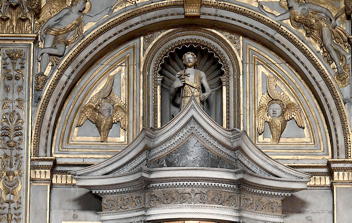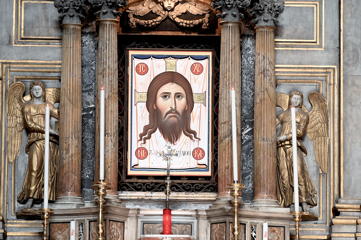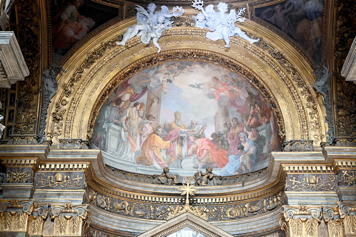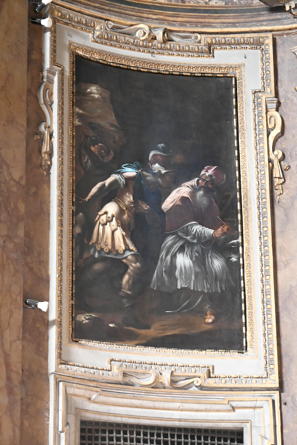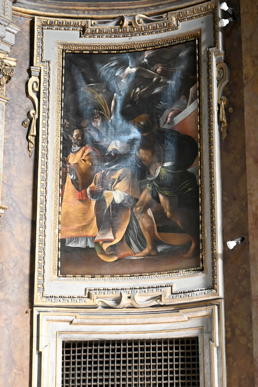San Silvestro in Capite is a 16th century conventual, national and titular church dedicated to Pope St Sylvester I (314-335). The Latin words "in capite" refer to a fragment of the head of St. John the Baptist, kept as a relic, enshrined here since the 13th century. The church is in rione Colonna (III) and stands on the north side of Piazza di San Silvestro. The church was declared to be the national church for expatriates from England in 1890.
For reference, a plan of the church is available
here.
The church was built into the family mansion of Pope Paul I in 761 specifically to receive bones from the catacombs, which were being plundered and destroyed by the Lombard marauders. Pope Paul dedicated the monastery to the two popes Saints Stephen (254-257) and Silvester (314-335).
In March of 1084 the army of Robert Giuscard sacked Rome and caused severe damage to the area around the church, and probably to the church and monastery as well. The church was rebuilt and the campanile with Romanesque arcades added in 1198 during the papacy of Innocent III, and was finished in 1216.
in 1286, Pope Honorius IV gave the complex to the Poor Clares, also known as the Second Order of St Francis. They were to remain in residence for almost six hundred years. The Poor Clares decided to rebuild in the 16th century. They employed
Francesco Capriani da Volterra to start work on the convent in 1588. Then he focused on the church from 1591 to 1601, being assisted from 1595 by
Carlo Maderno. Structurally this resulted in the present building, consecrated in 1601. By 1685, the sisters had begun to focus their attention on the ornamentation of the interior, under the direction, successively, of the architects
Carlo Rainaldi, Mattia de'Rossi and painter
Ludovico Gimignani, and completed in 1689. The façade was reconstructed in 1703 by
Domenico de'Rossi at the expense of the convent. The complex was mostly rebuilt in 1878.
The nuns remained until 1876, when the monastery was rebuilt as the General Post Office, and the church was closed until 1885 when it became the English National Church in Rome. In 1885 the care of the church was granted to the Society of the Catholic Apostolate, better known the
Pallottine Fathers, founded by St. Vincent Pallotti. It also serves as a church for the Philippine Community in Rome. The Pallottine Fathers remain in charge to this day. In the same year the city was impressed when the Pallottines set up an electric lighting system for the church, apparently the first for any Roman church edifice.
In 1906, a confessio or devotional crypt was excavated in front of the high altar, and various sculptural fragments discovered in the process are now on the walls of the atrium. Eight popes are buried in the basilica, including the relics of Pope St Sylvester, Pope St Stephen I and Pope St Dionysius, which were exhumed and re-enshrined beneath the altar in the confession 1908. The church also contains the relics of
Saint Tarcisius.
Famous relics
The convent had two especially famous relics. The best-known one, still in the church, is the head of St John the Baptist. The second relic is a version of the ancient icon of Christ called the Mandylion or Image of Edessa, known as the Holy Face of San Silvestro. This is now kept in the Vatican.
